Analyzing 2013 Oncology Trends to Predict 2014 Directions
Applied Clinical Trials
When examining the frequency in use of keywords related to cancer research, some important trends emerge.
The landscape of oncology drug discovery is constantly changing. Are researchers this year still discussing the same trends as 2013? Crown Bioscience analyzed the last three years of publications and presentations at the American Association for Cancer Research's (AACR) annual meetings, as well as the AACR/European Organisation for Research and Treatment of Cancer (EORTC) Molecular Targets and Cancer Therapeutics conferences to search for potential trends.
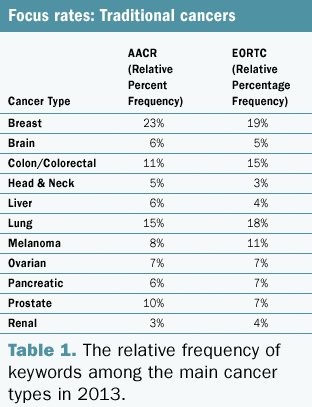
The first group of keywords analyzed related to the main solid cancer types. Table 1 shows the relative frequency of keywords among the main cancer types in 2013. Table 2 illustrates the change in frequency of keywords between 2011 and 2013, as a percentage change compared to the overall number of presentations each year. Across the spectrum of cancer types, there does not appear to be a dramatic change in the frequency of publications around each cancer type. The dip in prostate numbers at the 2013 EORTC compared to previous years, while interesting, may just be an outlier.
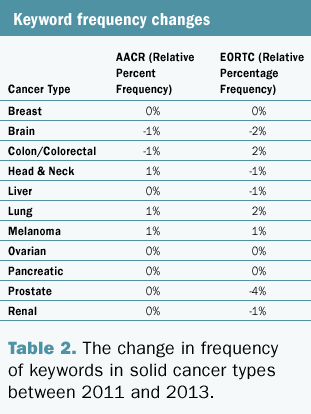
The second group of keywords analyzed for frequency were the hematological cancer types (Table 3). Change in frequency of keywords between 2011-2013 was also analyzed (Table 4). Considering the low frequency with which hematological keywords are mentioned, there does not appear to be a significant change in numbers.
The analysis so far does not show any dramatic shifts in areas of interest for research. However, when examining the frequency in the use of terms, which relate to the informal feedback received from scientific and business development teams, some important trends emerge. A common theme of 2013 was the focus on cancer resistance, whether mechanistic or looking for pharmacological approaches against resistance. In the last two years, the relative frequency with which resistance has been mentioned at AACR has increased by 22%. The use of the terms "tumor microenvironment" and "epithelial-mesenchymal transition" have also increased by 19%.
More than 40 other terms and references to key mutations were reviewed, with most remaining surprisingly constant. One term, however, stood out: Patient-derived xenograft models (PDX). At 2013's AACR meeting, there was a seven-fold increase in the number of PDX references compared to the previous two years, and a nine-fold rise at the EORTC event. This points to an increasing trend in 2014 around the use of image-guided irradiation, which produces a concentrated and targeted treatment for cancer.
— Jean Pierre Wery, President, Crown Bioscience Inc.
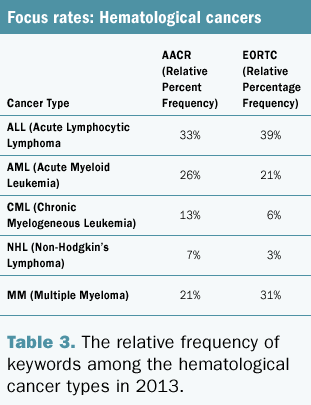
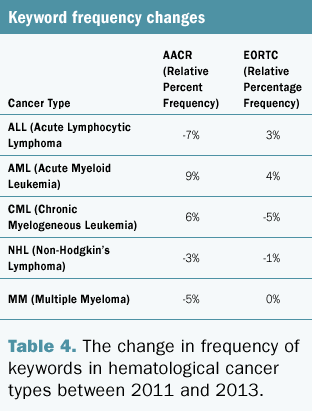
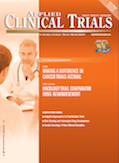
Improving Relationships and Diversifying the Site Selection Process
April 17th 2025In this episode of the Applied Clinical Trials Podcast, Liz Beatty, co-founder and chief strategy officer, Inato, discusses a number of topics around site engagement including community-based sites, the role of technology in improving site/sponsor relationships, how increased operational costs are impacting the industry, and more.
Behind the Buzz: Why Clinical Research Leaders Flock to SCOPE Summit
February 7th 2025In this episode, we meet with Micah Lieberman, Executive Conference Director for SCOPE Summit (Summit for Clinical Ops Executives) at Cambridge Innovation Institute. We will dive deep into the critical role of collaboration within the clinical research ecosystem. How do we bring together diverse stakeholders—sponsors, CROs, clinical trial tech innovators, suppliers, patients, sites, advocacy organizations, investors, and non-profits—to share best practices in trial design, program planning, innovation, and clinical operations? We’ll explore why it’s vital for thought leaders to step beyond their own organizations and learn from others, exchanging ideas that drive advancements in clinical research. Additionally, we’ll discuss the pivotal role of scientific conferences like SCOPE Summit in fostering these essential connections and collaborations, helping shape the future of clinical trials. Join us as we uncover how collective wisdom and cross-industry partnerships are transforming the landscape of clinical research.